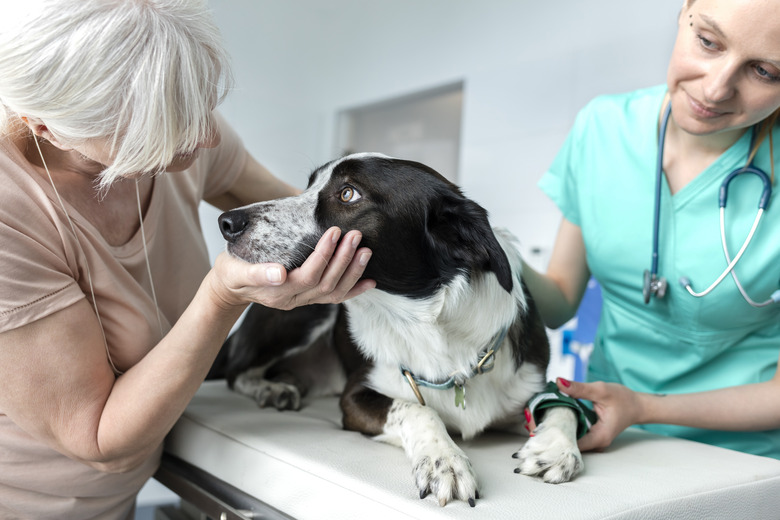Why Does My Dog Pace In Circles?
Our dogs' comfort is one of the most important things to consider for many pet guardians, so seeing our canine suddenly begin to pace in circles aimlessly can be upsetting and alarming. Often, dogs will pace for reasons that aren't worth worrying about, like when they're trying to find the perfect spot to rest for the evening. Sometimes, however, a pacing dog can be a sign that something is wrong, either mentally or physically, and may require a visit to a doctor.
Identifying physical pain
Identifying physical pain
Dog circling may be attributed to physical pain, and when it comes to aging dogs, this is often the result of ailments like arthritis, dental disease, and vision or hearing impairment. According to the ASPCA, additional diseases that are often related to aging can include Cushing's disease, disorders of the urinary tract, hyperthyroidism, and cancer.
If physical pain is the reason for your dog's circling behavior, attempting to stop him through touch may lead to more discomfort. This can sometimes cause a dog to become irritable, anxious, and even aggressive, in some cases. Pain relief medication and supplements are often given to dogs to manage age-related pain, and are prescribed and monitored with the help of a medical professional, be that via a pharmaceutical or natural route.
Dealing with cognitive disorders
Dealing with cognitive disorders
One of the most common reasons why a dog may pace in circles is cognitive dysfunction, which can occur as the result of aging or as a symptom of an underlying disease. According to a 2019 study published in the Journal of Veterinary Medical Science, canine cognitive dysfunction, or CCD, is similar to dementia in people, and may result in a dog who is disoriented, withdrawn, slow-moving, exhibits an altered gait, and distorted perception. Sometimes, this may lead a dog to wander aimlessly or pace in circles.
For dogs who experience cognitive dysfunction due to aging, there are some advances in science and medicine that may help slow down the brain aging process in your dog. Drug and diet therapy can improve conditions for some dogs, and should be discussed with your veterinarian. Therapies include medication like Selegiline, which enhances neurotransmitter function, prescription diets, and dietary supplements, like vitamin E, vitamin B6, and ginkgo biloba, notes VCA Hospitals. You can also try keeping your dog's brain sharp and active through training, game playing, toys and regular exercise, if physical activity is a possibility for your canine.
Healthy circling behaviors
Healthy circling behaviors
Not all dog circling is the sign of physical or mental distress. Many dogs will make tight circles with their bodies prior to lying down, which is an inherited behavior that can be traced back to dogs' early ancestors, according to VCA Hospitals. This is done for a few reasons, the first being comfort — wild dogs circle their beds to stamp down grass and dirt to make their rest more pleasant, and to regulate temperature by circling and curling into tight balls to preserve heat. Additionally, dogs have learned to position themselves in specific ways to protect them from predators while they rest in case they may need to spring up out of sleep to fight off or flee from intruders.
